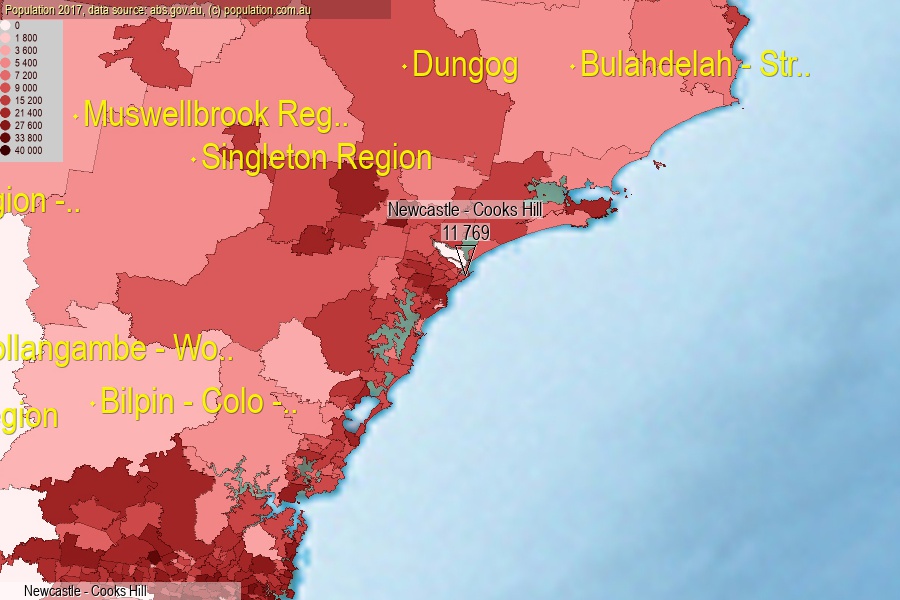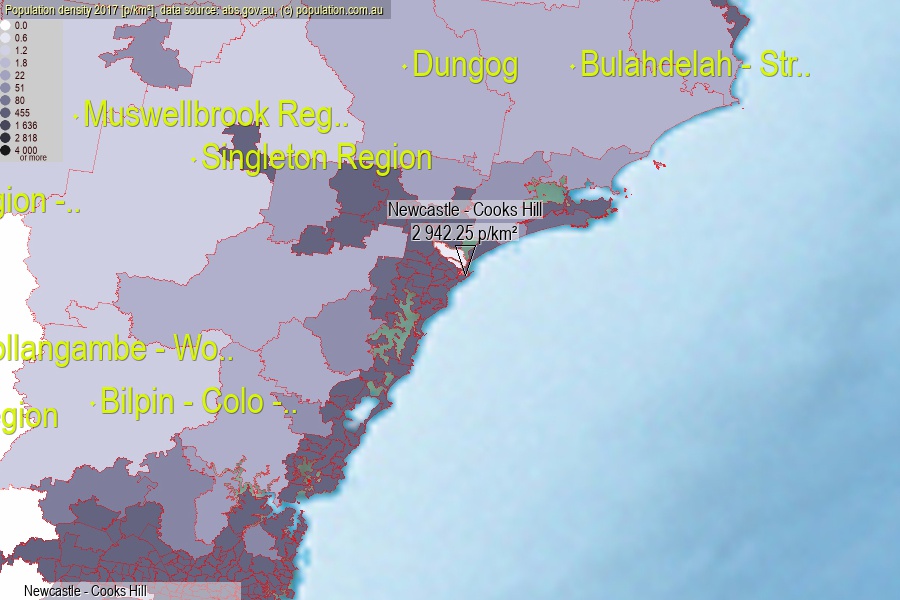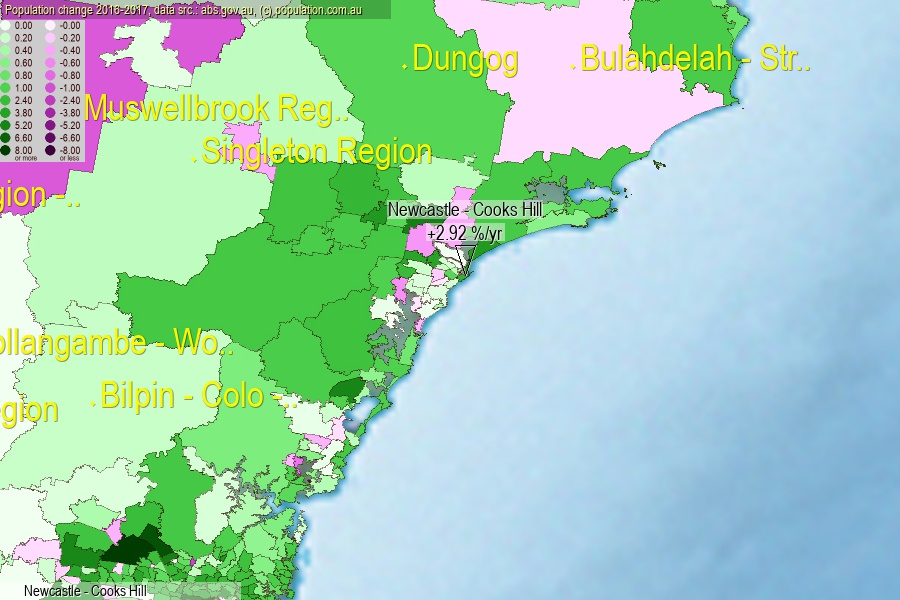 population.com.au
population.com.auLast official estimated population of Newcastle - Cooks Hill (as Statistical Area Level 2) was 11 769 people (on 2017-06-30)[2]. This was 0.05% of total Australian population and 0.148% of NSW population. Area of Newcastle - Cooks Hill is 4.00 km², in this year population density was 2 942.25 p/km² . If population growth rate would be same as in period 2016-2017 (+2.92%/yr), Newcastle - Cooks Hill population in 2025 would be 14 817. [0]



Click to enlarge. Newcastle - Cooks Hill is located in the center of the images.
Population [people], population density [p./km²] and population change [%/year] [2]
View borders » (new window) [4]
[1991-1992] +0.11 %/Yr.
[1992-1993] +0.21 %/Yr.
[1993-1994] +0.20 %/Yr.
[1994-1995] +0.28 %/Yr.
[1995-1996] +0.90 %/Yr.
[1996-1997] +1.09 %/Yr.
[1997-1998] +1.07 %/Yr.
[1998-1999] +0.97 %/Yr.
[1999-2000] +0.95 %/Yr.
[2000-2001] +1.04 %/Yr.
[2001-2002] +2.00 %/Yr.
[2002-2003] +4.29 %/Yr.
[2003-2004] +4.06 %/Yr.
[2004-2005] +2.60 %/Yr.
[2005-2006] +0.20 %/Yr.
[2006-2007] +2.36 %/Yr.
[2007-2008] +1.92 %/Yr.
[2008-2009] +1.28 %/Yr.
[2009-2010] +0.61 %/Yr.
[2010-2011] +5.13 %/Yr.
[2011-2012] +1.12 %/Yr.
[2012-2013] +1.04 %/Yr.
[2013-2014] +1.00 %/Yr.
[2014-2015] +1.50 %/Yr.
[2015-2016] +1.49 %/Yr.
[2016-2017] +2.92 %/Yr.
[0] Calculated with linear interpolation from officially estimated population
[1] Read more about SA2 and Australian Statistical Geography Standard (ASGS) on abs.gov.au
[2] Population data from Australian Bureau of Statistics (Population and density: 2017; change: 2016-2017)
[3] Digital Boundaries: Australian Statistical Geography Standard (ASGS) 2016.
[4] Border coordinates are simplifyed using Ramer-Douglas-Peucker algorithm.